What’s New for Chevy’s EV?
As the Chevy Bolt enters its 4th year of production, Chevrolet’s strategy has been straight and steady, with minimal changes to the Bolt’s performance and features. Its signature design goal and feature remain its range, and that continues for 2020. When the Bolt was introduced in late 2016, most BEVs had ranges under 120 miles on a charge. When the Bolt came on the scene with an EPA range of 238 miles, it set the standard.

The Bolt’s job one was range, and because of that, the rest of the car’s features were only average at best. In the meantime, new offerings from Tesla, Kia, Hyundai, Nissan, and others matched or exceeded the range of the Bolt both in EPA and real-world mileage.
Fast forward to 2020, and this year’s Bolt continues with range as job one. An updated battery cell design and chemistry from GM’s battery supplier LG Chem allows more capacity in the same battery shape as earlier Bolts. The new Bolt battery capacity is up from 60 kilowatt-hour (kWh) to 66 kWh with an EPA range increase from 238 miles to 259 miles. This increase puts it in front of its competitors for EPA range. It is on par with its competitors’ real-world mileage.
As far as can be gleaned from the 2020 Bolt specifications, other than two new paint colors (Oasis Blue and Cayenne Orange Metallic), the rest of the Bolt is unchanged.
Continuity Is Both a Good and Not So Good Thing
The Bolt continues to have exceptional quality construction. It’s also the shortest and narrowest of all of the BEVs in its class, which shows in its road manners. On smooth freeways, it has an excellent and firmly planted ride. On rough or uneven roads, its firm suspension makes the ride very bouncy and harsh. The cabin noise can be good on smooth roads averaging 62 Db @70 mph, but on rural or country freeways, road and tire noise is distracting.

The Bolt’s 200 horsepower motor has excellent torque, and acceleration is Tesla-like, but the chassis has a hard time keeping the tires planted, and in Sport mode, the Bolt can lose traction at just about any speed.
The suspension has MacPherson struts in the front, but the rear is a budget basement twist-beam setup.
Steering is firm and direct at any speed, but the brake system seems small for the Bolt’s 3,600-pound weight. Braking is firm, but sometimes can be underwhelming. As a backup, the Bolt has two regenerative braking levels, with the more aggressive level accessible from a steering-wheel-mounted paddle.

Interior features include 8.0-inch driver information center and a 10.2-inch infotainment unit that supports both Apple CarPlay and Android Auto.
The Bolt has all of the usual safety systems. Still, the Advanced Driver Assistance Systems (ADAS) are the same as when the Bolt was introduced. The Bolt still does not offer adaptive cruise control. Forward collision alert now has automatic emergency braking added as an extra-cost option. Otherwise, these types of systems are strictly bargain-basement on the Bolt. But overall, the Bolt earns a Government 5-star crash safety rating.

When designing the Chevy Bolt, the engineers used a subcompact platform, which required them to be very creative in how the Bolt was packaged. The interior space is generous only by carving out as much space as possible inside the body, which is short, narrow, and tall. One of the most visible and controversial ways GM accomplished this is by engineering the front seats to be comparatively thin with no power adjustment compared to other BEVs. The seats are fine for short trips, but as many owners have noted, they become uncomfortable after a short time. Overall, the interior trim is hard plastic but with an interesting texture that eliminates all windshield reflections.
Charging Range and Battery Life

The Bolt comes with a 110v/220v charging standard. Still, while most of the Bolt competitors include DC fast charging as standard equipment, it is an additional $750 option on the Bolt. In our limited exposure to the Bolt’s DC fast charging capabilities, we found we could get about 100 miles of range in 45 minutes. The battery warranty is average for the industry with an eight-ear/100,000-mile battery and component coverage.
During our short time with the Bolt, the range was average with the onboard instruments indicating an average range of 3.7 miles/kWh.
Pricing and Trim Levels
The Bolt has two trim levels, the LT and Premier.
Bolt LT – MSRP $37,495
Bolt Premier – MSRP $41,020
Destination – $875
Option Packages
LT Comfort and Convenience Package – $555
LT Driver Confidence Package – $495
Driver Confidence II Package – $495
Premier Infotainment Package – $595
DC Fast Charging – $750
The federal tax credit is no longer available for the Bolt. Still, state and local incentives, rebates, and credits are available and vary by geography. Also, there are generous discounts and incentives available directly from GM and your local Chevrolet dealer.
Our test Bolt Premier came equipped with DC Fast Charging, the Infotainment Package and the Driver Confidence Package II and had an MSRP with destination charges of $43,735.
Is the 2020 Bolt Right for You?
The 2020 Chevrolet Bolt is a well-built BEV that has been on the market for almost four years. Except for minor trim changes, it has remained unchanged, except for the larger battery capacity introduced for 2020. If you are considering one of the other BEVs available in the Bolt’s price range, then, by all means, add it to your consideration list. If the 2020 Bolt’s pricing seems a little steep for your pocketbook, then it would be prudent to consider used Bolts. Purchasing a two-year-old, low-mileage Bolt can cost considerably less than a new one and, except for the additional 21 miles of EPA range, it is pretty much identical.

GM’s commitment to becoming the dominant player in the burgeoning BEV market to the EV market is such that they have never sold a Bolt at a profit. Depending on the source of information, on each Bolt GM moves off the lot, they reportedly lose between $6,000 and $15,000. But that doesn’t diminish the quality and value of the Bolt. New or used, the Chevy Bolt is worth considering.
Story & photos by Gary Lieber
Make sure to opt-in to the Clean Fleet Report newsletter (top right of page) to be notified of all new stories and vehicle reviews.
Related Stories You Might Enjoy—Bolt Retrospectives & The EV Competition in 2020
Personal: Farewell To My Chevrolet Bolt EV
News: 2020 Chevrolet Bolt To Get 259 Miles of Range
Road Test: 2019 Chevrolet Bolt EV
Event: Chevrolet Bolt EV Autocross Experience
Road Trip: 2020 Nissan Leaf EV
Road Test: 2020 Kia Niro Electric
Road Test: 2020 Hyundai Kona Electric
Flash Drive: Tesla Model 3 Short Range Plus
Flash Drive: Tesla Model 3 Long Range
Disclosure:
Clean Fleet Report is loaned free test vehicles from automakers to evaluate, typically for a week at a time. Our road tests are based on this one-week drive of a new vehicle. Because of this we don’t address issues such as long-term reliability or total cost of ownership. In addition, we are often invited to manufacturer events highlighting new vehicles or technology. As part of these events we may be offered free transportation, lodging or meals. We do our best to present our unvarnished evaluations of vehicles and news irrespective of these inducements.
Our focus is on vehicles that offer the best fuel economy in their class, which leads us to emphasize electric cars, plug-in hybrids, hybrids and diesels. We also feature those efficient gas-powered vehicles that are among the top mpg vehicles in their class. In addition, we aim to offer reviews and news on advanced technology and the alternative fuel vehicle market. We welcome any feedback from vehicle owners and are dedicated to providing a forum for alternative viewpoints. Please let us know your views at publisher@cleanfleetreport.com.

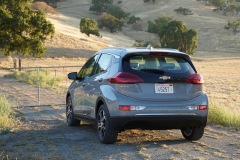
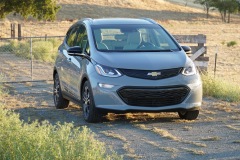
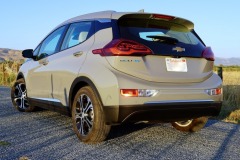
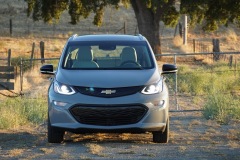
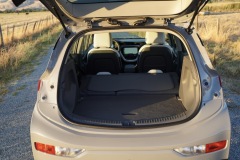


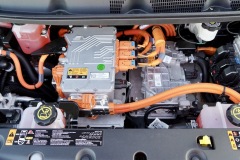
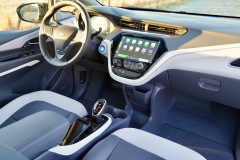
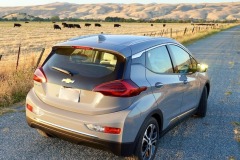
1 thought on “Road Test: 2020 Chevrolet Bolt EV”